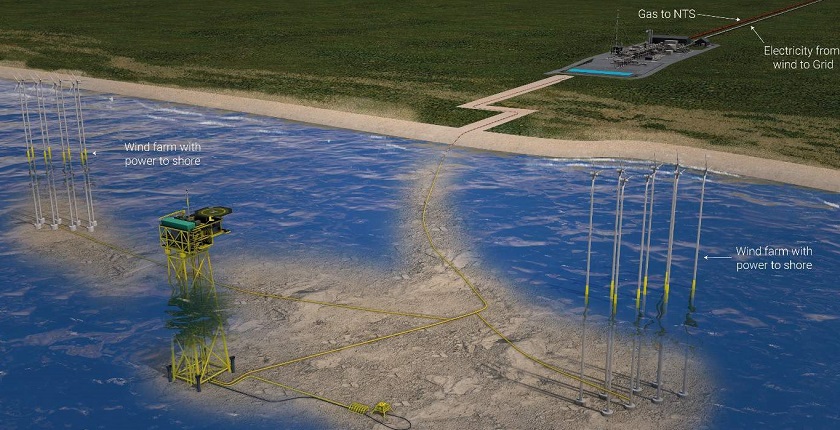
Photo: BSOG
Black Sea Oil & Gas (BSOG) and its Midia Gas Development Project (MGD) partners, Petro Ventures Resources and Gas Plus Dacia, have started the permitting process for a power corridor to connect future offshore wind farms to the Transelectrica national power grid (SEN). It will be the first power corridor in the Romanian Black Sea.
With a designed capacity of 3 GW and 126 kilometers in length, the completion of the regulatory procedures for the power link is expected by mid-2024, Sea Oil & Gas SA said.
The MGD project comprises the Ana and Doina gas fields with roughly 10 bcm of resources. It delivered its first natural gas quantities in June last year, with peak production expected to be approximately 1 bcm per year for the following three years.
MGD’s power line unlocks a key requirement for developing offshore wind power for Romania
The project, with its existing infrastructure, is uniquely suited to provide the power corridor to serve offshore wind production and the required reception and SEN connection facilities such as substations and, if required, converters, the company said. The realization of MGD’s power line unlocks a key requirement for developing offshore wind power for Romania, it added.
Of note, at the end of March, Romanian Minister of Energy Virgil Popescu said that the offshore wind energy bill could be approved very soon. There is 77 GW of potential in the Black Sea.
One of the biggest challenges in developing an offshore wind farm is trying to secure and then permit a grid connection
Mark Beacom, CEO of BSOG, said that offshore wind power expectations for fixed installation in the Romanian Black Sea are highly promising.
However, one of the biggest challenges in developing an offshore wind farm is trying to secure and then permit a power route from the offshore production facilities to the grid, he added.
These challenges, in his words, include encountering onshore and offshore highly regulated areas such as environmentally protected areas, military zones, tourist areas, archaeological sites, and historical monuments, anchorages, harbors, and shipping lanes, as well as securing land rights and the social license with the targeted communities, coexistence with fishing activities, and the detection and avoidance of UXOs.
“Our MGD infrastructure has already addressed these matters,” he stressed.
BSOG is owned by Carlyle International Energy Partners and the European Bank for Reconstruction and Development (EBRD).


















Be the first one to comment on this article.